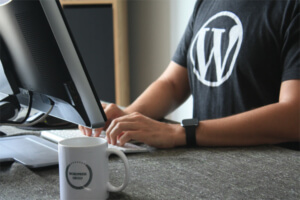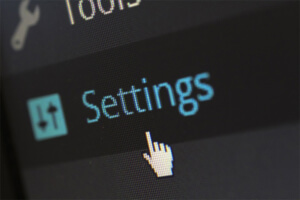WordPress Website Maintenance Tips For 2021

In our opinion WordPress websites and more specifically their Admin panel are like snowflakes in that no two are alike. When we take on a new maintenance client that has a WordPress site we have some preliminary steps we must go through before we can start adding to the content of the site. First, we have to ensure that three things are all updated otherwise the site can break upon attempting to add content:
1. The version of WordPress running the site
2. All active plugins installed in the site
3. The theme that is running the WordPress site.
As an open source platform, WordPress offers developers a great opportunity to implement new features and innovations that most other CMS platforms cannot offer. On other platforms, add-ons like plugins are not freely available like most WordPress plugins are. The plugins are uploaded to the WordPress system by developers all around the world. But the plugins need to be often updated by the developer to ensure the plugin is safe. Having plugins installed comes with the constant threat of being attacked by hackers. To prevent this from happening, you must routinely maintain your WordPress website.
Maintaining a WordPress website is one of the most important tasks you need to perform. However, because WordPress makes it so easy for you to continually build out your site without programming experience, the maintenance part is often ignored by website owners. In most cases, website owners feel that maintaining a website is a burden rather than a necessity. This increases the chances of hacking, reduces load times and can hurt search engine rankings.
The following are some of the most important WordPress website maintenance tips. You should consider all for maintenance work on your WordPress website at least once a month. This will ensure your site is always protected from hackers and malware that have the potential to
Backup, Backup, Backup
Before starting any maintenance it is always important to run a backup of your WordPress site. This can be done with many different plugins but we use one of the more higher rated plugins for back called Backguard.
Some other highly rated backup plugins are: UpdraftPlus WordPress Backup Plugin and Backup and Restore WordPress – Backup Plugi
Note: Most hosting companies also do weekly backups on their end so even if you do not run backups often, your host can likely restore a working version of your website from their backup.
Enable website maintenance mode

Remove Unnecessary Plugins
WordPress plugins are an incredible method of broadening the functionality of your site. However, using too many plugins can impact the performance and security of your website. If you want your site to work correctly, you should remove plugins that are not being used anymore. Simply, remove unnecessary plugins. It will lessen the burden on your website and make it more efficient.
Keep Changing Passwords
Change your passwords regularly to secure your WordPress website. Include capitalized and lowercase letters, numbers, and exceptional characters to improve character quality. Long passphrases are practically unthinkable for programmers to anticipate, however, are simpler to recollect than random numbers or bundle of letters, such a significant number of individuals pick them. Also, everyone knows that changing passwords is a must, but we do not always have time for this. This is the place some top-notch secret password administrators will show up. They create a safe secret password for you; however, store it in a secure vault.
Database Optimization
The database is where all site content is stored. This includes blog posts, pages, images, videos, settings, and more. As the site grows, the database begins to grow, and the site slows down. If you want to improve your site’s performance and make it secure, you need to optimize your database. You can use WordPress plugins to maximize your site’s database and speed it up. This plugin also helps remove spam comments, random draft posts, etc.
Manage users securely
Site security is also based on how you manage your user accounts. Most website owners hide their site passwords and leave them vulnerable. If you are a novice user, do not provide login details to multiple users. To enhance the security of your site, each user should provide their login and password details. Apart from this, do not use the “admin” username for your WP account. Try replacing the default username with a new unique username. You can also use long and hard-to-break passwords. Also, if you want to protect your site from hackers and other security threats, you can change the login page URL.
Keep Updating Things
The core of WordPress is secure, and there is a developer who continually updates the CMS, as well as an extensive community that protects it further by exposing plugins that support these efforts. Installing too many plugins without making sure they are safe can lead to vulnerabilities in WordPress and hacks to your WordPress site. Installing specific plugins can offload some tasks and even add cool and sophisticated features to your WordPress site, but in the end, they can be a threat to your website if you do not take a look over them regularly. Keep updating plugins and themes manually to avoid risks to your WordPress website.
Conclusion
Maintaining a WordPress website regularly is a mandatory job. If you don’t manage your site continually, you run the risk of making it a slow, insecure, and confusing website that’s hard for both visitors and administrators to use. The tips above provide a high-level roadmap for creating your maintenance schedule. Also, it will help you to know the most necessary steps that you must take to maintain your website. So, imply these tips and enjoy the benefits. Contact Internet Solutions For Less today for all of your WordPress maintenance needs.
